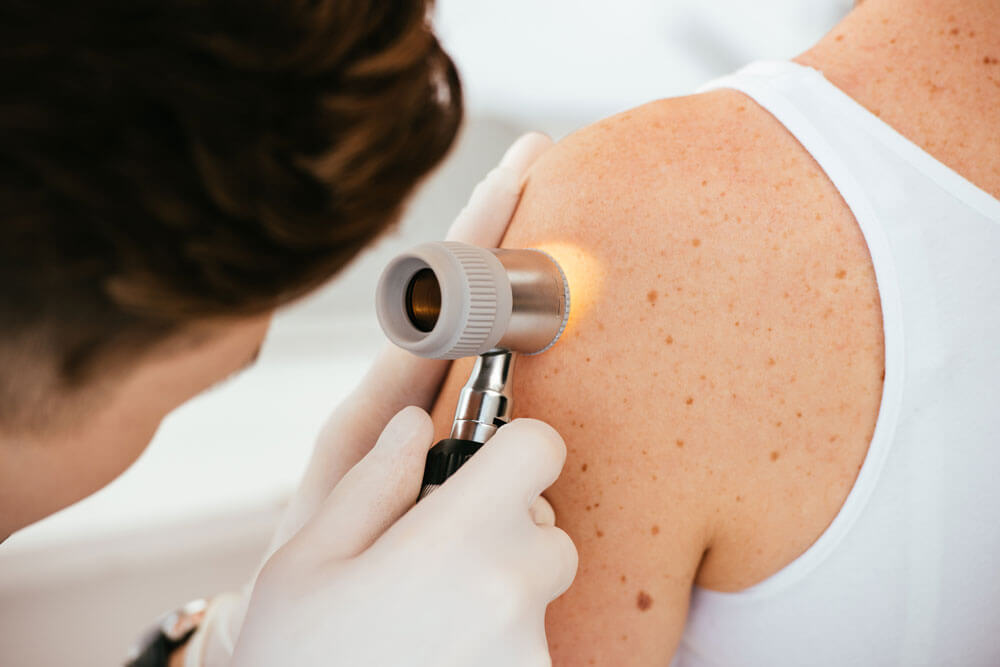The Role of a Skin Doctor in Identifying and Treating Numerous Skin Conditions
The duty of a dermatologist extends far past fundamental skin care; it includes the detailed procedures of identifying and dealing with a vast selection of skin problems. The complexity of skin disorders often requires a diverse technique that consists of not just medical treatments however likewise individual education and preventative methods.
Relevance of Skin-related Expertise
The experience of skin doctors is vital in the diagnosis and administration of skin problems, as they possess specialized understanding that prolongs beyond general medical training. This innovative understanding is crucial for precisely determining a vast array of skin problem, which typically present with overlapping symptoms that can perplex non-specialist experts. Skin specialists are trained to separate between numerous skin disorders, making certain appropriate treatment strategies are applied swiftly.
In addition, the field of dermatology encompasses a special mix of clinical skills and advanced modern technology. Dermatologists make use of advanced analysis devices, such as dermatoscopes and skin biopsies, to examine skin sores and establish their nature. This technological proficiency enables very early discovery of possibly significant problems, consisting of skin cancers cells, which can substantially improve patient outcomes.

Typical Skin Disorders Identified
Various skin conditions can provide with differing levels of seriousness and intricacy, making skin-related knowledge important for precise diagnosis and monitoring. Among the most common problems are acne vulgaris, psoriasis, dermatitis, and dermatitis.
Acne vulgaris, defined by the visibility of pustules, comedones, and papules, mainly impacts teens yet can linger right into adulthood. Eczema, or atopic dermatitis, is a persistent inflammatory condition that brings about dry, itchy, and inflamed skin. Psoriasis is an autoimmune problem that shows up as red, flaky plaques, primarily on extensor surfaces, and can substantially affect the quality of life.
Other typical disorders include rosacea, which presents with facial flushing and noticeable capillary, and seborrheic dermatitis, frequently causing dandruff and oily patches on the scalp. Fungal infections, such as tinea pedis (professional athlete's foot) and tinea corporis (ringworm), are likewise regularly experienced.
These varied problems need a detailed understanding of pathophysiology, as well as expertise of restorative alternatives, to direct effective therapy techniques - Dermatologist Raleigh NC. Via accurate diagnosis, skin doctors can supply tailored management strategies that deal with both the signs and symptoms and underlying causes of these typical skin conditions
Analysis Strategies Made Use Of
Exactly how do dermatologists properly detect different skin disorders? Skin doctors utilize a mix of professional examinations, analysis tools, and specialized techniques to make sure specific recognition of skin problems.
Among the primary analysis techniques is dermoscopy, which makes use of a portable gadget to magnify skin lesions, enabling comprehensive evaluation of frameworks not noticeable to the nude eye. Furthermore, skin biopsies are regularly executed, wherein a little example of skin is gotten rid of for histopathological analysis. This technique is indispensable for diagnosing conditions such as cancer malignancy and various other skin cancers.
Patch testing is an additional important method utilized to recognize get in touch with dermatitis by exposing small quantities of prospective irritants to the skin. Laboratory examinations, including blood examinations and societies, may be conducted to rule out systemic issues or infections. Collectively, these analysis techniques enable skin doctors to create a detailed understanding of skin problems, bring news about accurate diagnoses and informed client monitoring.

Therapy Options Readily Available
A large range of treatment choices is available for taking care of skin conditions, tailored to the specific problem and specific person needs. Dermatologists use both systemic and topical therapies, depending upon visit homepage the extent and sort of skin condition. Topical treatments, such as corticosteroids, retinoids, and calcineurin preventions, are typically prescribed for problems like psoriasis, acne, and eczema. These agents target inflammation and promote skin recovery.
For extra extreme problems, systemic therapies may be essential. These consist of oral medicines such as anti-biotics for bacterial infections and immunosuppressants for autoimmune disorders. Biologics, a newer class of medications, have shown efficacy in dealing with persistent inflammatory problems like psoriasis and atopic dermatitis.
Along with pharmacologic interventions, skin doctors may advise step-by-step alternatives such as laser chemical, therapy, or phototherapy peels (Dermatologist Raleigh NC). These treatments can resolve pigmentation problems, acne scarring, and other skin irregularities efficiently
Moreover, way of life modifications, consisting of correct skincare routines and sun security, play a vital function in the total management of skin conditions. By combining these therapy techniques, skin specialists intend to improve patient outcomes and boost lifestyle for those impacted by skin problems.
Individual Education And Learning and Assistance
Empowerment through expertise is necessary in the monitoring of skin problems, as patient education and learning and support dramatically influence therapy results. Skin doctors play a pivotal duty in giving people with thorough details concerning their conditions, treatment choices, and self-care strategies. Efficient interaction fosters a collaborative setting where people can proactively get involved in their own care.

Assistance extends beyond education; it includes emotional peace of mind and recurring support. Skin doctors must develop a risk-free space for patients to share their issues and ask inquiries. Resources such as educational pamphlets, websites, and support system can better equip clients, allowing them to link with others facing similar challenges.
Eventually, a knowledgeable person is much more most likely to engage in their therapy journey, bring about much better adherence, satisfaction, and improved wellness outcomes. The skin specialist's role in client education and learning and support is essential to maximizing the management of skin problems.
Conclusion
In final thought, skin doctors play an important duty in the efficient diagnosis and therapy of a wide variety of skin disorders. Their customized expertise, integrated with sophisticated diagnostic methods and tailored therapy strategies, ensures thorough look after individuals. In addition, the emphasis on client education and learning cultivates proactive administration of skin wellness, equipping people to take informed actions concerning their skincare programs. The payments of dermatologists significantly enhance the top quality of life for those impacted by skin disease.
The role of a skin specialist expands much past basic skin care; it encompasses the complex procedures of identifying and treating a this article broad array of skin disorders. Skin specialists use innovative analysis devices, such as dermatoscopes and skin biopsies, to assess skin lesions and establish their nature. Ultimately, the specialized training and experience of dermatologists are vital in giving comprehensive treatment for people with skin conditions.
Furthermore, skin biopsies are regularly done, where a little sample of skin is removed for histopathological evaluation. Jointly, these diagnostic techniques permit skin specialists to develop an extensive understanding of skin disorders, leading to exact medical diagnoses and notified patient monitoring.